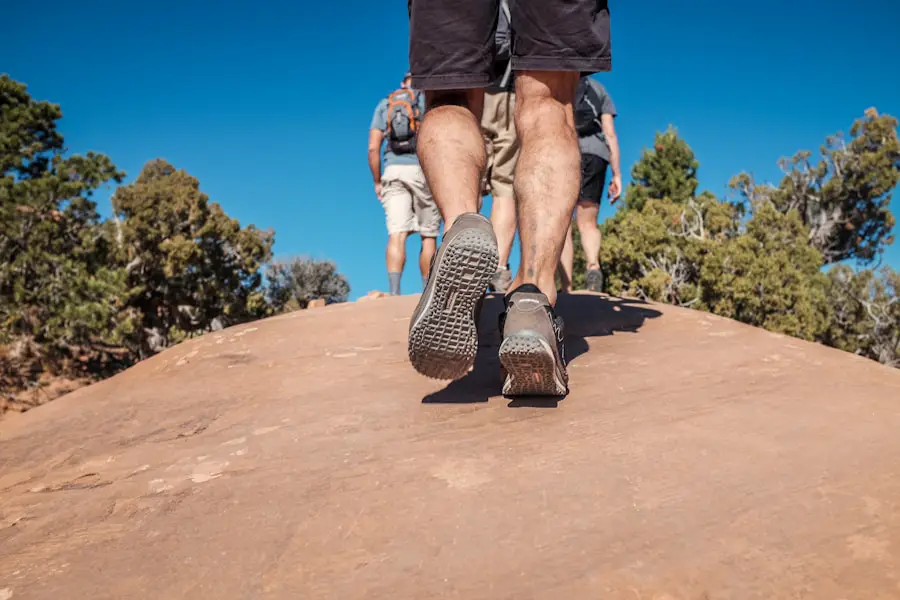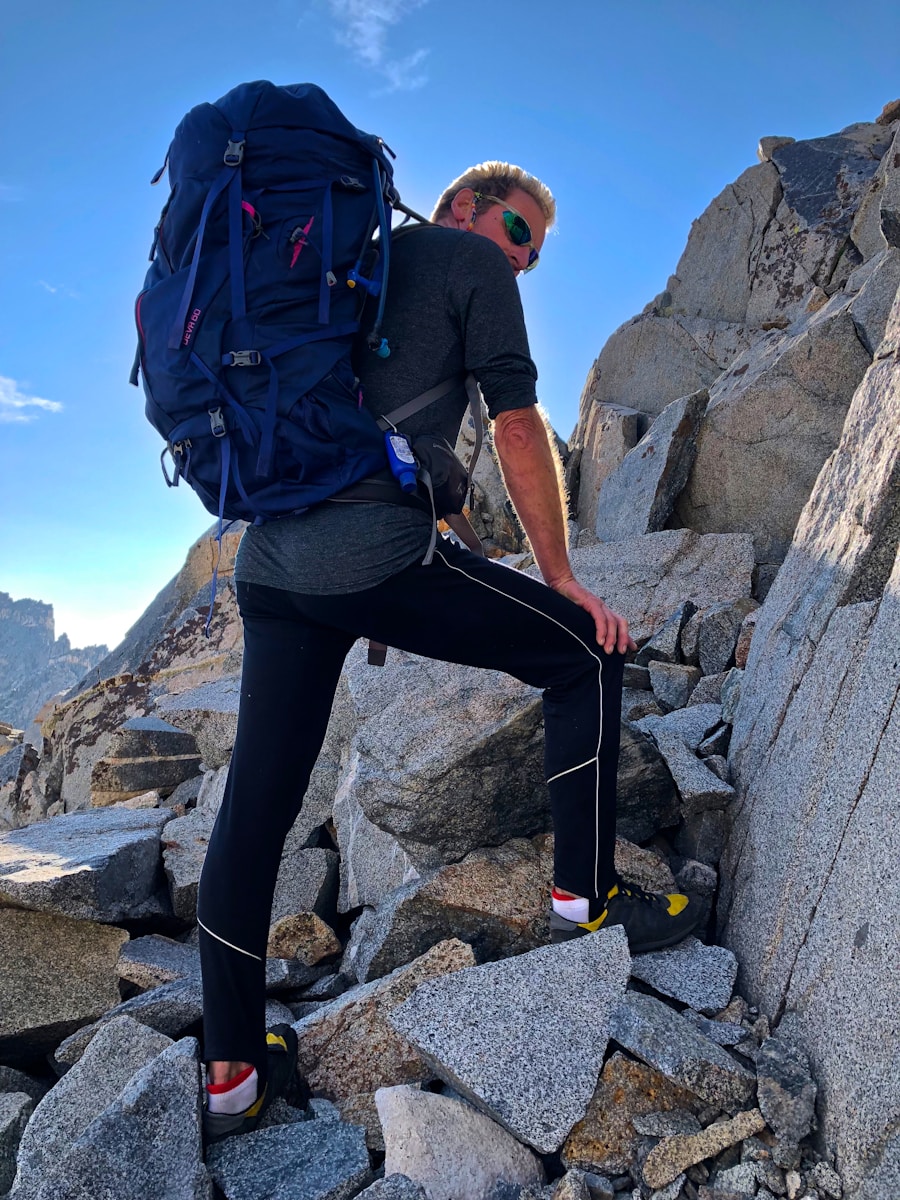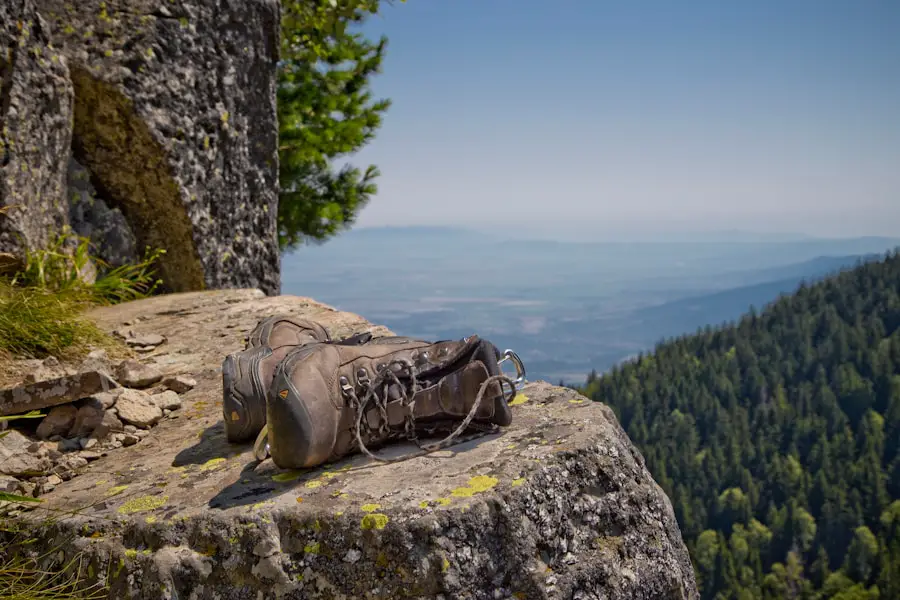The significance of proper hiking boot sizing cannot be overstated. A well-fitted boot is crucial for both comfort and performance on the trails. When hiking, your feet endure a variety of stresses, from uneven terrain to varying weather conditions.
If your boots are too tight, they can cause blisters and discomfort, leading to a less enjoyable experience. Conversely, if they are too loose, your foot may slide around inside the boot, increasing the risk of sprains and other injuries. Proper sizing ensures that your feet are adequately supported, allowing you to focus on the beauty of nature rather than the pain in your feet.
Moreover, the right fit can enhance your overall hiking experience by improving your stability and traction. Hiking often involves navigating rocky paths, steep inclines, and slippery surfaces. A boot that fits well will provide the necessary support to your ankles and arches, reducing fatigue and enhancing your ability to tackle challenging terrains.
Additionally, a snug fit helps in maintaining control over your movements, which is essential for preventing falls and injuries. Therefore, investing time in finding the right size is not just about comfort; it’s about safety and performance on the trail.
Key Takeaways
- Proper hiking boot sizing is crucial for comfort, support, and preventing injuries on the trail.
- Measuring your feet accurately is essential for finding the perfect fit in hiking boots.
- When trying on hiking boots, pay attention to the fit in the heel, toe box, and overall support and comfort.
- Different types of hiking (day hiking, backpacking, mountaineering) may require different features in hiking boot sizing.
- Different brands and styles of hiking boots may have varying sizing, so it’s important to try on different options and consider sizing up or down.
Measuring Your Feet for the Perfect Fit
To achieve the perfect fit for your hiking boots, it is essential to start with accurate measurements of your feet. This process involves more than just knowing your shoe size; it requires measuring both the length and width of your feet. The best time to measure your feet is at the end of the day when they are slightly swollen from daily activities.
This will give you a more realistic size that accommodates any natural expansion that occurs during hiking. Begin by standing on a piece of paper with your heel against a wall. Mark the longest point of your foot on the paper and measure the distance from the wall to this mark using a ruler.
Repeat this process for both feet, as it is common for one foot to be slightly larger than the other. Additionally, measuring the width of your foot is equally important. Use a flexible measuring tape to wrap around the widest part of your foot and note this measurement as well.
With these dimensions in hand, you can refer to sizing charts provided by manufacturers to determine the best size for your hiking boots.
Trying on Hiking Boots: What to Look For

Once you have determined your size based on measurements, the next step is trying on various hiking boots. It is advisable to try on boots later in the day when your feet are at their largest due to natural swelling. When trying on boots, wear the same type of socks you plan to use while hiking, as this can significantly affect fit and comfort.
Pay attention to how the boot feels around your heel; it should fit snugly without slipping as you walk. As you walk around in the boots, assess how they feel in different areas of your foot. There should be enough room in the toe box for your toes to wiggle without feeling cramped, yet not so much space that your foot slides forward with each step.
A good rule of thumb is to ensure there is about a thumb’s width of space between your longest toe and the front of the boot. Additionally, check for any pressure points or areas where the boot may rub against your foot; these can lead to blisters during long hikes. The overall feel should be secure yet comfortable, allowing for natural movement without restriction.
Considerations for Different Types of Hiking
| Hiking Type | Considerations |
|---|---|
| Day Hiking | Proper footwear, sufficient water, sun protection, trail map |
| Backpacking | Lightweight gear, multi-day food supply, navigation skills, weather preparedness |
| Winter Hiking | Insulated clothing, traction devices, avalanche awareness, shorter daylight hours |
| Mountain Hiking | Altitude sickness prevention, proper acclimatization, emergency communication device |
Different types of hiking require different features in a boot, which can influence sizing and fit considerations. For instance, if you are planning on tackling rugged mountain trails or multi-day backpacking trips, you may need a boot that offers more support and stability. These boots tend to be stiffer and may require a slightly larger size to accommodate thicker socks or insoles designed for added cushioning.
On the other hand, if you are engaging in casual day hikes or walking on well-maintained paths, a lighter boot or even a trail runner may suffice. These options often have a more flexible design and may fit more snugly around the foot. It’s essential to consider not only the type of terrain you will encounter but also the weight of your pack and how it will affect your foot positioning within the boot.
A heavier load may necessitate a more robust boot with additional support features, which could influence how you size up.
Sizing Tips for Different Brands and Styles
Hiking boot sizing can vary significantly between brands and styles due to differences in design philosophy and manufacturing processes. Some brands may run larger or smaller than standard sizes, making it crucial to try on multiple options before making a decision. For example, brands like Salomon may have a narrower fit compared to Merrell, which often caters to wider feet.
Understanding these nuances can save you time and frustration in finding the right pair. Additionally, consider that different styles within a brand may also fit differently. For instance, a low-cut hiking shoe might feel different from a mid-cut or high-cut boot even if they are labeled with the same size.
It’s advisable to read reviews or seek advice from experienced hikers regarding specific models’ fits before purchasing. Many outdoor retailers offer fitting services or knowledgeable staff who can assist in navigating these differences, ensuring that you find a pair that meets both your size requirements and comfort preferences.
Common Mistakes to Avoid When Sizing Hiking Boots

Fitting Variations Across Brands and Styles
Assuming that all boots labeled with the same size will fit identically across different brands or styles is a prevalent error. Variations in design can lead to significant differences in fit, making it essential not to rely solely on size labels but rather on how each individual boot feels when worn.
Accounting for Sock Thickness
Neglecting to account for sock thickness when trying on boots is another mistake. Many hikers prefer thicker socks for added warmth and cushioning during colder months or longer treks. Failing to wear these socks while trying on boots can result in an inaccurate fit assessment.
Long-Term Comfort
Some hikers make the mistake of purchasing boots that feel comfortable initially but do not consider how they will feel after several hours of wear. It’s crucial to walk around in them for an extended period during fitting sessions to ensure they remain comfortable over time.
Tips for Ensuring Comfort and Support
To ensure maximum comfort and support from your hiking boots, consider investing in quality insoles tailored to your foot type and arch support needs. Many stock insoles provided with boots may not offer adequate cushioning or support for long hikes. Custom or high-quality aftermarket insoles can significantly enhance comfort by providing better arch support and shock absorption.
Another important aspect is lacing technique; how you lace your boots can affect both fit and comfort during hikes. Experimenting with different lacing methods can help alleviate pressure points or improve heel lock without compromising overall comfort. For instance, using a heel lock lacing technique can prevent heel lift during descents, reducing the risk of blisters and enhancing stability on uneven terrain.
Knowing When It’s Time to Replace Your Hiking Boots
Recognizing when it’s time to replace your hiking boots is crucial for maintaining foot health and ensuring safety on trails. One clear indicator is visible wear and tear; if you notice significant tread wear or damage to the upper material, it’s likely time for a new pair. Worn-out soles can compromise traction, making it difficult to navigate slippery or rocky surfaces safely.
Another sign that replacement is necessary is discomfort during hikes that was not present when the boots were new. If you begin experiencing blisters or pain that persists despite proper sizing and lacing techniques, it may indicate that the cushioning has degraded or that structural support has diminished over time. Regularly inspecting your boots after each hike can help you identify these issues early on, allowing you to replace them before they lead to injury or discomfort on future adventures.
When considering how a hiking boot should fit, it is important to also think about the gear you will be carrying on your outdoor adventures. One essential piece of equipment for any outdoor enthusiast is a reliable travel fishing rod. In a recent article on TakeTravelInfo, they highlight some of the best options for portable fishing rods that are perfect for hiking trips. Pairing the right hiking boots with the right fishing gear can make for a successful and enjoyable outdoor experience.
Love travel? Join Our Facebook Community For More Tips.
FAQs
What is the importance of a proper fitting hiking boot?
A proper fitting hiking boot is important for providing support, stability, and comfort while hiking. Ill-fitting boots can lead to blisters, hot spots, and discomfort, which can ruin a hiking trip.
How should a hiking boot fit?
A hiking boot should fit snugly around the heel and midfoot, with some room for the toes to wiggle. The boot should not feel too tight or too loose, and there should be no pressure points or areas of rubbing.
What are some signs of an ill-fitting hiking boot?
Signs of an ill-fitting hiking boot include heel slippage, toe jamming, pressure points, and discomfort. Blisters, hot spots, and soreness can also indicate that the boot does not fit properly.
Should I try on hiking boots in the afternoon?
It is recommended to try on hiking boots in the afternoon when your feet are slightly swollen, as this is when they are at their largest. This will help ensure that the boots fit comfortably throughout the day.
How much toe room should there be in a hiking boot?
There should be about a thumb’s width of space between the end of your longest toe and the front of the boot. This allows for enough room for your toes to move and prevents them from hitting the front of the boot while hiking downhill.
